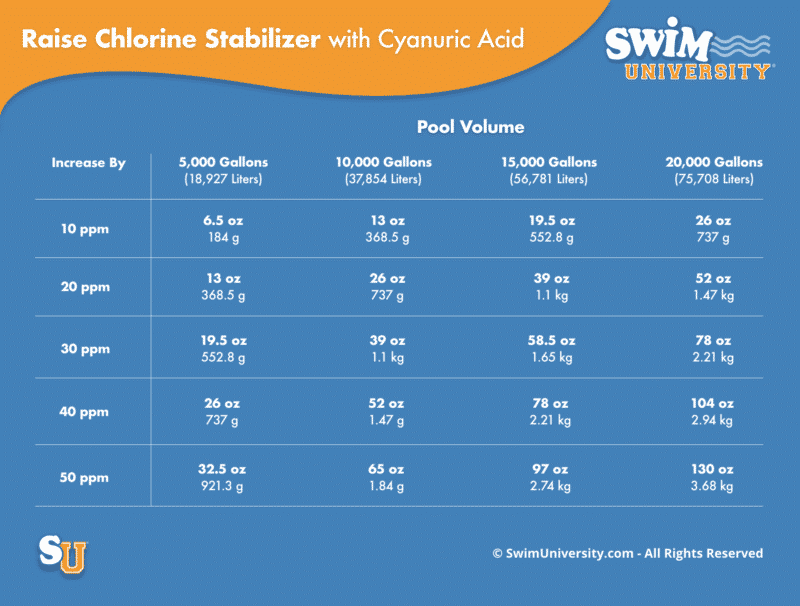Keeping your pool water clean and safe for swimming requires the right balance of chemicals. Chlorine stabilizer, also known as cyanuric acid, is an essential component in maintaining the effectiveness of chlorine in your pool. It helps prevent the sun’s UV rays from breaking down the chlorine too quickly, ensuring that your pool stays sanitized. In this guide, we will walk you through the steps on how to add chlorine stabilizer to your pool effectively.
Step 1: Test Your Pool Water
Before adding any chemicals to your pool, it’s crucial to test the water to determine the current levels of cyanuric acid. You can use a pool water testing kit to check the stabilizer levels accurately. The ideal range for cyanuric acid in a pool is between 30-50 parts per million (ppm). If the levels are below 30 ppm, it’s time to add some stabilizer to your pool.
Step 2: Calculate the Amount of Stabilizer Needed
Based on the size of your pool and the current cyanuric acid levels, you will need to calculate the amount of stabilizer required. Most pool stabilizers come with dosage instructions based on the volume of water in your pool. Follow these guidelines carefully to avoid over or under-dosing your pool.
Step 3: Preparing the Stabilizer
Chlorine stabilizer usually comes in granular form, which needs to be dissolved before adding it to the pool. Fill a bucket with warm water and slowly add the required amount of stabilizer while stirring continuously. Ensure that the granules are completely dissolved before proceeding to the next step.
Step 4: Adding the Stabilizer to the Pool
Once the stabilizer is fully dissolved in the bucket, you can pour the solution directly into the pool. It’s essential to disperse the stabilizer evenly across the pool water to prevent localized high concentrations. You can walk around the pool perimeter while pouring the solution to ensure uniform distribution.
Step 5: Circulate the Water
After adding the stabilizer to the pool, turn on the filtration system to circulate the water thoroughly. This will help in distributing the stabilizer evenly and mixing it with the pool water. Allow the pump to run for at least 24 hours to ensure proper dispersion of the stabilizer.
Step 6: Retest the Water
After 24 hours of circulating the water, test the pool water again to check the cyanuric acid levels. The stabilizer should have raised the cyanuric acid levels within the desired range of 30-50 ppm. If the levels are still low, you may need to add more stabilizer following the same process.

Credit: www.youtube.com
Tips for Adding Chlorine Stabilizer
- Always follow the manufacturer’s instructions on the product label for the correct dosage.
- Do not add stabilizer directly to the skimmer as it can clog the filter system.
- Avoid adding stabilizer on a windy day to prevent it from blowing away before dissolving.
- Keep children and pets away from the pool area when adding chemicals.
Benefits of Using Chlorine Stabilizer
Adding chlorine stabilizer to your pool offers several benefits, including:
- Extended chlorine effectiveness: Stabilizer helps chlorine last longer in your pool, reducing the frequency of adding more chlorine.
- Cost-effective: By using stabilizer, you can save money on chlorine products as they will be more efficient in sanitizing the pool water.
- Protection from UV rays: Stabilizer shields chlorine from the sun’s UV rays, ensuring that it can effectively kill bacteria and algae in the pool.

Credit: www.swimuniversity.com
In Conclusion
Ensuring that your pool has the right balance of chemicals is essential for maintaining a safe and clean swimming environment. Adding chlorine stabilizer to your pool can help in prolonging the effectiveness of chlorine and keeping your pool water sanitized. By following the steps outlined in this guide and being cautious with the dosage, you can successfully add stabilizer to your pool and enjoy a crystal-clear swimming experience all season long.





